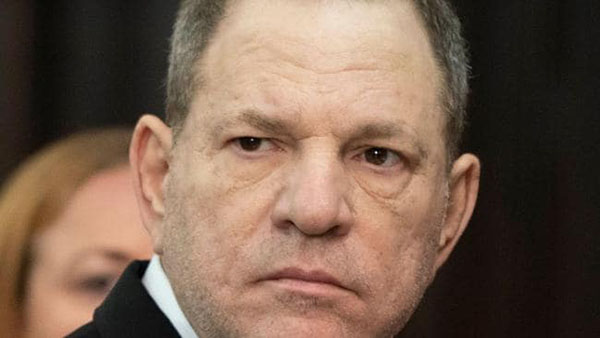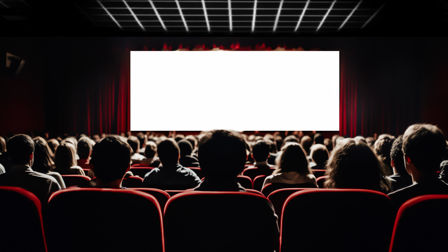Holding Out For a Shero
Is adland really addressing gender bias and sexual misconduct in the ranks? As part of our Heroes special, shots examines the industry’s feminist beacons... and villains.
Since the term ‘feminisme’ was first coined in France in 1837, the F-word brand has endured more ups and downs than a menopausal woman’s mood. But in the wake of MeToo and Time’s Up, it seems that women’s rights are all right and adland has started to expose and try to tackle the dark forces of sexism in the industry.
It’s strange to think that in years to come our daughters might possibly thank Weinstein, Trump and other pussy-grabbing types for their services to feminism
... their deeds and/or attitudes having set off a chain reaction resulting in #MeToo and Time’s Up and a general upsurge in revulsion that’s accelerated the drive to seriously address sexual harassment and gender inequality.

When shots examined advertising’s gender issues in 2015, and again last year , though welcome initiatives such as the 3 Percent Conference and Free The Bid had started to effect change, it was at a snail-like pace. Not all the conversations started were ending in action and it seemed some brands were pursuing ‘femvertising’ in the spirit of what Grey’s Vicki Maguire dubs the ‘stop the bandwagon, I want to get on’ phenomenon.
It is still the case that although women occupy 46 per cent of the jobs in advertising, they account for only 11 per cent of creative directors. More disturbingly it has become apparent that sexual harassment in the industry is rife.
Inspired by #MeToo, in October last year consultant and diversity advocate Cindy Gallop issued a call on social media for people to contact her with tales of harassment that they've not made public. She says the response was overwhelming and revealed to her the fact that adland has been concealing murky corners crawling with Weinsteins.
Sharon Jiggins, EVP of FCB Inferno notes: “It should be a key priority of all agencies to take a good look at themselves and their behaviour. There can be blind spots where senior management are concerned as they have grown up in an era of advertising where sexual banter and acting on gender bias was seen as acceptable.”
The burning issue just got hotter
Gradually it does seem that the industry is facing a time of reckoning and cases have been coming to light. Though communications officer Erin Johnson’s sexual harassment suit against JWT’s Gustavo Martinez rumbled on for more than two years, she reached a settlement in April. Lawsuits against other adland heavyweights are under investigation. The Time’s Up Legal Defense Fund is helping more victims come forward and the US-based movement has also spawned Time’s Up Advertising, which was launched this March to address sexual misconduct and inequality in adland; the group of female industry leaders who’ve signed up to it has grown from 14 to 200. In March, a UK version of the movement, timeTo, was founded by a number of bodies including The Advertising Association.
In the wider workplace, a UK gender pay disparity that’s been woeful for decades was dubbed by Theresa May a “burning issue”.
This led to this April’s Gender Pay Gap Report which revealed almost eight in 10 companies and public sector bodies pay men more than women. In the ad industry, WPP has been condemned for its gender pay gap of 14 per cent.
Simple-minded sexpots or servants
It’s long been established that getting women promoted – and respected by equal pay – in the industry will lead to more diverse, stereotype-free advertising. The causal link works both ways; advertising plays a crucial part in shaping images of womanhood, and the better the role models the media reflects back to young girls, the more future female leaders there’ll be to create more diverse advertising.

Last year, joint research conducted by the Geena Davis Institute on Gender and JWT New York revealed that women were 48 per cent more likely than men to be shown in the kitchen and generally used more simple language than them.
The Museum of Brand’s research last year also identified how women in ads fall into a few disappointing archetypes ranging along a narrow spectrum from sex objects to mumsy, household drudges.
But three heroic ads bucked such trends and have proved to be beacons in a landscape of stereotypes. Four years ago Like a Girl refreshed the formerly cringeworthy, sanitised advertising of sanitary products. AJ Hassan, now ECD at R/GA, was one of the Leo Burnett creatives behind the Always campaign and notes its legacy: “a lot of the clichés, such as women confidently wearing ‘white pants’ or smiling about being on their period have been updated with more humour and honesty.”

Always, Like A Girl
But the ad’s genius was to explore the issue of confidence in general during puberty and also to highlight how language reflects sexist tropes. Does she feel it’s helped to rebrand the concept ‘girl’? “Since Like A Girl, we’ve definitely seen more brands reimagine how they talk to women and girls, who expect more relevant and authentic representation. Less expected brands like LIFEWTR, Audi, GE, even Barbie, have pushed against old stereotypes. But have we done enough? Not at all. We’ve just started.”
Ballsy sportswomen and big bronze bollocks
The second landmark ad, released January 2015, was Sport England’s This Girl Can, which improved on Dove’s Real Beauty drive to present realistic images of women. FCB Inferno's Jiggins, whose agency created the ad reveals the campaign’s legacy: “It’s amazing how often people have said to me “the new ad from brand x reminds me of This Girl Can”. There has definitely been a seismic shift in how women are being portrayed, particularly in the FMCG and retail sectors where clichés were rife.”

Last year’s This Girl Can 2, widened the call out to a broader age range; from 14 to 70. Jiggins says the social media response from post-40s women was astounding. “All it took was showing women like themselves in the campaign to reach them. It’s ludicrous that so many brands have yet to latch on to this.”
Sport England: This Girl Can 2
The third landmark ad was Fearless Girl, which saw McCann NY plonk a 50-inch-high bronze statue of a little girl facing down Wall Street’s Charging Bull sculpture on the eve of International Women’s Day. Marketing a fund investing in female-led companies, the sculpture has become “the most honoured piece of advertising in recent history” according to Ad Age.

State Street Global: Fearless Girl
Not everyone was impressed though – Charging Bull sculptor Arturo Di Modica launched a legal battle to get it moved, claiming it rendered his bull’s message negative and threatening, when it was intended to signal “freedom in the world, peace, strength, power and love”. It seems a bit of a stretch to find symbols of peace and love in a 3200kg rampaging bull, but hey, context is all, and Fearless Girl’s placement did suggest a battle of the sexes.
One of the campaign’s creatives, Lizzie Wilson, associate CD at McCann, says: “Our research showed the world of finance is still male dominated. If you Google image ‘stock broker’, ‘company president’ or ‘board chairman’ you end up with a sea of men’s faces. We really wanted to disrupt the financial world.”
The girl’s stance was carefully crafted to convey confidence in the midst of this world of men. “The hands on hips ‘power pose’ is something that’s so natural for little girls, but something we lose as we get older,” says Wilson, “the raised chin and peaceful smile show no anger, only optimism.”
The girl does seem calmly confident that she’ll prevail in her defiance against ‘bullishness’; against a symbol that – whether positive or negative – is definitely male (the totemic rubbing of its giant bronze bollocks to bring good luck and fertility has become a thing).

Charging Bull, New York
Responding to Di Modica’s gripes Mayor Bill De Blasio wryly commented that “men who don’t like women taking up space are exactly why we need the Fearless Girl.” He also extended the initial week-long permit for the girl to stay put up till this year’s International Women’s Day.
At the time of writing, the girl is still in situ, and plans have been announced that she’ll be moved by the end of 2018 to a new location where she can face off the New York Stock Exchange. Since she appeared more than 150 companies have added a female director to their boards. Looks like Fearless Girl has won her battle; she certainly won International Woman’s Day 2017.
The positives of discrimination
So who were the heroes of IWD this year?
BBDO New York’s campaign, It’s Time to Redefine, highlighted the shameful fact that the word ‘woman’ can still be found in dictionaries as a synonym for terms like ‘prostitute’ and ‘servant’
... which continued the debate started by Like A Girl about the role language plays
in perpetuating harmful stereotypes.
FCB Inferno launched Queen Rules, an integrated campaign prompted by art director Ben Edwards’ five-year-old daughter asking why the king outranked the queen in card games. The project, which raised money for solidarity campaign HeForShe, included a social experiment film, produced by Archer’s Mark, in which children posed the question to unsuspecting adults who found themselves flummoxed: why are kings seen as better than queens?
HeForShe: Queen Rules
The film was helmed by rising star Libby Burke Wilde who was one of the directors of Google's film, #OneDayIWill, for IWD 2016 and says she notes a marked increase in calls for female directors in the run up to Women’s Day each March. However, as she’s just moving into commercials from music videos, she’s pragmatic about grasping opportunities.
“I’m at the stage of my career where I’ll just say ‘I’ll do it’ though I know a lot of it is tokenism.”
She acknowledges, though, how positive discrimination can be… well, positive. “I do really think whatever it takes, it’s important to get more women working in the industry so we see more role models.”
We discuss how, in a sense, that’s how Free the Bid, which she finds hugely supportive, operates. “They have an Instagram account showcasing women at work. It was great to see Reed Morano [The Handmaid’s Tale director] operating a camera at eight months pregnant.” She tells me about screenwriter Aline Brosh McKenna’s launch of #femalefilmmakerfriday, which similarly features images of women working on set and was originally inspired by Saoirse Ronan saying that watching Greta Gerwig helm Lady Bird made her think she could one day direct. Again, social media is proving to be a hero for the sheros.
Bold Barbies, bad blogs and bumojis
Mattel probably won International Women's Day 2018 with the release of a gang of new Inspiring Women Barbie dolls, which include role models such as artist Frida Kahlo, aviator Amelia Earhart, snowboarder Chloe Kim and Wonder Woman director, Patty Jenkins.

It continues the Shero programme launched in 2015 to highlight women notable for the height of their achievements rather than the buoyancy of their boobs – and signals a welcome departure from the bygone Barbie’s vapid grin, flowing locks and outlandish curves.
Speaking of impossibly-shaped bimbos, Kim Kardashian was possibly the anti-hero of IWD for shamelessly cashing in on the day by releasing special editions of her Kimojis.
...(early editions have included images of her fulsome derrier, – a bumoji if you like – how empowering…) with slogans in red and pink (yawn), such as 'full-time feminist'.
The latter is, in her case, a smidge inaccurate considering her 2015 blog post stating that though she supported women’s rights she didn’t like to label herself “feminist”. Presumably she found a whole new respect for the label since realising she could charge $3 a pop for her Kimojis.
But we must forgive Kim her bum notes and stand together with our sisters. Full-time feminism is trending again and Time's Up signals that the time for a new world order is now. Older women may be cynical, we’ve seen feminism wax and wane before, but it’s good to hear the young enthuse: “I really do think that things are changing,” says Burke Wilde, “it’s really cool to be a director at this time. To have that change happening now. It feels quite pivotal.” Let’s hope she’s right.
)






 Membership
Membership




